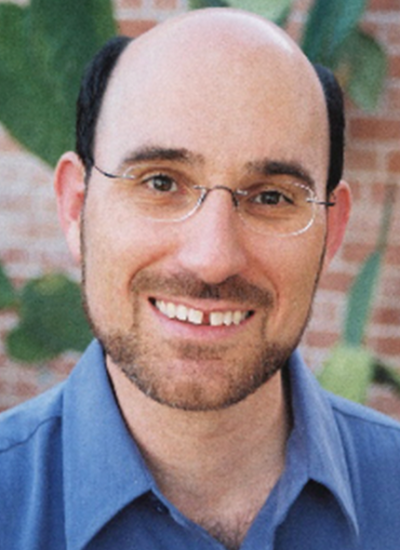Kim, E., & Kececioglu, J. (2008). Learning scoring schemes for sequence alignment from partial examples. IEEE/ACM Transactions on Computational Biology and Bioinformatics, 5(4), 546-556.
PMID: 18989042;Abstract:
When aligning biological sequences, the choice of scoring scheme is critical. Even small changes in gap penalties, for example, can yield radically different alignments. A rigorous way to learn parameter values that are appropriate for biological sequences is through inverse parametric sequence alignment. Given a collection of examples of biologically correct reference alignments, this is the problem of finding parameter values that make the scores of the reference alignments be as close as possible to those of optimal alignments of their sequences. We extend prior work on inverse parametric alignment to partial examples, which contain regions where the reference alignment is not specified, and to an improved formulation based on minimizing the average error between the scores of the reference alignments and the scores of optimal alignments. Experiments on benchmark biological alignments show we can learn scoring schemes that generalize across protein families, and that boost the accuracy of multiple sequence alignment by as much as 25 percent. © 2008 IEEE.
Kececioglu, J., & Starrett, D. (2004). Aligning alignments exactly. Proceedings of the Annual International Conference on Computational Molecular Biology, RECOMB, 8, 85-96.
Abstract:
A basic computational problem that arises in both the construction and local-search phases of the best heuristics for multiple sequence alignment is that of aligning the columns of two multiple alignments. When the scoring function is the sum-of-pairs objective and induced pairwise alignments are evaluated using linear gap-costs, we call this problem Aligning Alignments. While seemingly a straightforward extension of two-sequence alignment, we prove it is actually NP-complete. As explained in the paper, this provides the first demonstration that minimizing linear gap-costs, in the context of multiple sequence alignment, is inherently hard. We also develop an exact algorithm for Aligning Alignments that is remarkably efficient in practice, both in time and space. Even though the problem is NP-complete, computational experiments on both biological and simulated data show we can compute optimal alignments for all benchmark instances in two standard datasets, and solve very-large random instances with highly-gapped sequences.
Christof, T., Jünger, M., Kececioglu, J., Mutzel, P., & Reinelt, G. (1997). A branch-and-cut approach to physical mapping of chromosomes by unique end-probes. Journal of Computational Biology, 4(4), 433-447.
PMID: 9385538;Abstract:
A fundamental problem in computational biology is the construction of physical maps of chromosomes from hybridization experiments between unique probes and clones of chromosome fragments in the presence of error. Alizadeh, Karp, Weisser and Zweig (Algorithmica 13:1/2, 52-76, 1995) first considered a maximum-likelihood model of the problem that is equivalent to finding an ordering of the probes that minimizes a weighted sum of errors and developed several effective heuristics. We show that by exploiting information about the end-probes of clones, this model can be formulated as a Weighted Betweenness Problem. This affords the significant advantage of allowing the well-developed tools of integer linear-programming and branch-and-cut algorithms to be brought to bear on physical mapping, enabling us for the first time to solve small mapping instances to optimality even in the presence of high error. We also show that by combining the optimal solution of many small overlapping Betweenness Problems, one can effectively screen errors from larger instances and solve the edited instance to optimality as a Hamming-Distance Traveling Salesman Problem. This suggests a new approach, a Betweenness-Traveling Salesman hybrid, for constructing physical maps.
Kececioglu, J., & Yu, J. (2001). Separating repeats in DNA sequence assembly. Proceedings of the Annual International Conference on Computational Molecular Biology, RECOMB, 176-183.
Abstract:
One of the key open problems in large-scale DNA sequence assembly is the correct reconstruction of sequences that contain repeats. A long repeat can confound a sequence assembler into falsely overlaying fragments that sample its copies, effectively compressing out the repeat in the reconstructed sequence. We call the task of correcting this compression by separating the overlaid fragments into the distinct copies they sample, the repeat separation problem. We present a rigorous formulation of repeat separation in the general setting without prior knowledge of consensus sequences of repeats or their number of copies. Our formulation decomposes the task into a series of four subproblems, and we design probabilistic tests or combinatorial algorithms that solve each subproblem. The core subproblem separates repeats using the so-called k-median problem in combinatorial optimization, which we solve using integer linear-programming. Experiments with an implementation show we can separate fragments that are over laid at 10 times the coverage with very few mistakes in a few seconds of computation, even when the sequencing error rate and the error rate between copies are identical. To our knowledge this is the first rigorous and fully general approach to separating repeats that directly addresses the problem.
Suh, Y., Snodgrass, R. T., Kececioglu, J. D., Downey, P. J., Maier, R. S., & Yi, C. (2017). EMP: execution time measurement protocol for compute-bound programs. Software - Practice and Experience, 47(4), 559-597.


